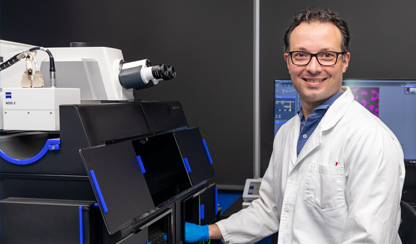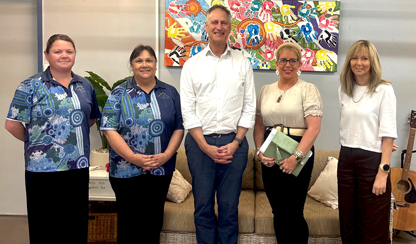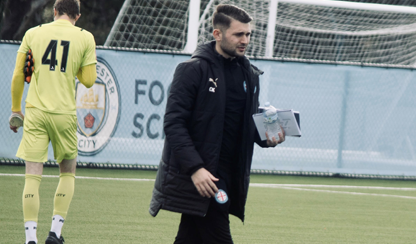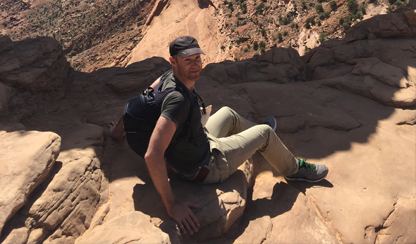18 August 2022
Institute news

Dr Adam Parslow is the keeper of our state-of-the-art microscopy equipment, including the unique multiphoton microscopy platform that has the power to cut a human hair lengthways 600 times. Adam works collaboratively with scientists and researchers across 18 of our labs and is often the first person to see discoveries in all their minute glory.
We go Fast Five with Adam and take a microscopic look at what makes him tick.
What inspired you to pursue a career in science?
I find inspiration in the beauty and complexity of biology. My inquisitive nature was fostered during my secondary schooling, and I entered undergraduate studies with excitement after the human genome project. I was encouraged at university that bench-based science could improve human health through discovery.
What does an average day look like for you?
My role involves empowering and educating researchers across the Baker Institute to perform their best optical microscopy experiments. I interact with colleagues from at least 18 different laboratories along all stages of their experimental pipelines. I often run between floors as I coordinate education sessions, provide assisted imaging, new equipment demonstrations, deliver seminars, and resolve equipment issues to ensure we achieve the best with our microscopes. I am lucky to be exposed to the breadth of research that occurs at the Baker Institute. I am also currently leading the development of improved scientific standards for microscopy globally through my involvement with QUAREP-Limi (Quality Assessment and Reproducibility for Instruments & Images in Light Microscopy). With this group of imaging leaders from across the globe, we are improving how imaging metadata is recorded and will establish new standards for publication in leading journals. This effort involves working groups made up of individuals, including equipment vendors, platform managers, right through to publishers, all tasked with improving the reproducibility of global optical research.
What's your favourite type of microscope at the Institute?
This question is like trying to pick a favourite amongst my children. The multiphoton has a special place in my career as this world unique system drew me to work at the Institute. This microscope was built through cooperation and persistence from organisations around the globe that were prevented from coming to Australia by border closures. This microscope provides opportunities to perform experiments not previously possible at the Baker Institute. Our researchers are taking advantage of these capabilities to do amazing things.
What are some of the things you like to do outside of work?
At home, I spend my time with my partner and our three young children (1, 3, and 5 years old). Their excitement and wonder for the world remind me why I love science as we learn and explore the world together. We enjoy weekends full of camping, bushwalking, Lego, and swimming. If we can find a babysitter, my partner and I enjoy theatre productions and both volunteer at Lord Somers and Power House youth organisation, based close to the Institute at Albert Park lake.
Tell us something about you that not many people at work would know
During my PhD, I was an elite swimmer in the Australian National Program. Endlessly following the black line in the pool gave me plenty of time to think about the experiments I wanted to perform in the lab that day. I enjoyed racing at the highest levels in Australia and won multiple relay gold and an individual bronze at National Championships. When I retired, I ranked in the top 10 Victorian Swimmers of all time. Today my swimming involvement is concentrated on my children’s learn-to-swim lessons.





